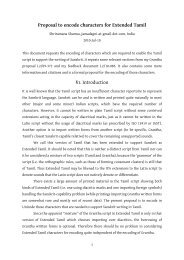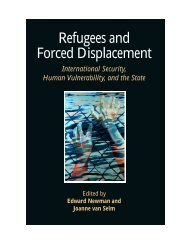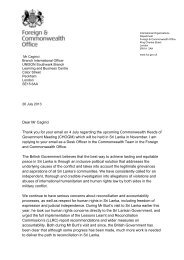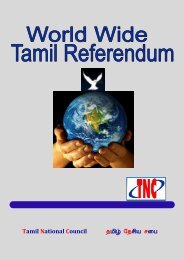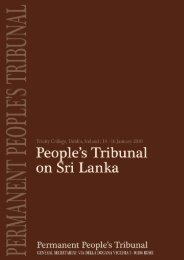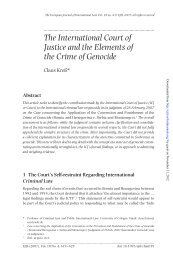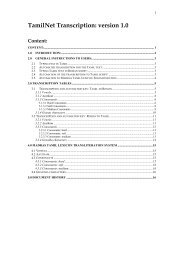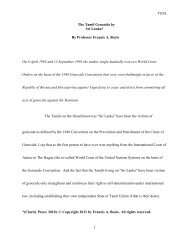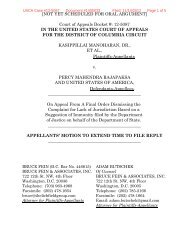Untitled - International Commission of Jurists
Untitled - International Commission of Jurists
Untitled - International Commission of Jurists
Create successful ePaper yourself
Turn your PDF publications into a flip-book with our unique Google optimized e-Paper software.
(f) the measures necessary to prevent the occurrence <strong>of</strong> such alleged<br />
activities in the future;<br />
(g) the relief, if any, that should be afforded to the parents, spouses and<br />
dependents <strong>of</strong> the persons alleged to have been so removed or to have<br />
disappeared; and<br />
(h) to make such recommendations with reference to any <strong>of</strong> the matters<br />
that have been inquired into under the terms <strong>of</strong> this Warrant.<br />
In view <strong>of</strong> the importance <strong>of</strong> these <strong>Commission</strong> Reports, the following analysis deals<br />
with different aspects <strong>of</strong> their establishment, functioning and recommendations.<br />
3.1.1. General Reflections<br />
The <strong>Commission</strong>s were each assigned a specific geographical area <strong>of</strong> the country:<br />
• Western, Southern and Sabaragamuwa (‘the 1994 Western, Southern<br />
and Sabaragamuwa Disappearances <strong>Commission</strong>’);<br />
• Central, North Western, North Central and Uva Provinces (‘the 1994<br />
Central, North Western, North Central and Uva Disappearances<br />
<strong>Commission</strong>’);<br />
• Northern and Eastern Provinces (‘the 1994 Northern and Eastern<br />
Disappearances <strong>Commission</strong>’).<br />
These three <strong>Commission</strong>s investigated a total <strong>of</strong> 27,526 complaints out <strong>of</strong> which<br />
16,800 cases were established to amount to enforced disappearances. Out <strong>of</strong> the<br />
16,800 cases, the three <strong>Commission</strong>s were <strong>of</strong> the opinion that, there was evidence<br />
indicative <strong>of</strong> the identities <strong>of</strong> those responsible for the relevant involuntary removal <strong>of</strong><br />
persons and their subsequent disappearances in respect <strong>of</strong> 1,681 cases. 271<br />
Some specific patterns relating to the occurrence <strong>of</strong> violations emerge from analysis<br />
<strong>of</strong> the <strong>Commission</strong> Reports. The extreme poverty <strong>of</strong> the affected persons, the intense<br />
pressure exerted by police and army structures to cover up the incidents, the<br />
collaborative and even participatory role <strong>of</strong> politicians in encouraging the abuses and<br />
the poignant reality that, as revealed by the 1994 Western, Southern and<br />
Sabaragamuwa Disappearances <strong>Commission</strong>,<br />
[…] out <strong>of</strong> the 8739 cases reported to the <strong>Commission</strong>, 1296 cases concerned<br />
the involuntary removal <strong>of</strong> children aged below 19 years, effectively therefore<br />
14.82% <strong>of</strong> the total number <strong>of</strong> disappearances. 272<br />
Another 2,451 (28.05 percent) were from the 20-24 age group. Thus 3,747 (43<br />
percent) <strong>of</strong> disappearances reported to the <strong>Commission</strong> were <strong>of</strong> persons aged 24 and<br />
271 United Nations Human Rights Committee, Fourth Periodic Report <strong>of</strong> Sri Lanka,<br />
CCPR/C/LKA/2002/4, 18/10/2002, at para. 156.<br />
272 ibid.<br />
79



